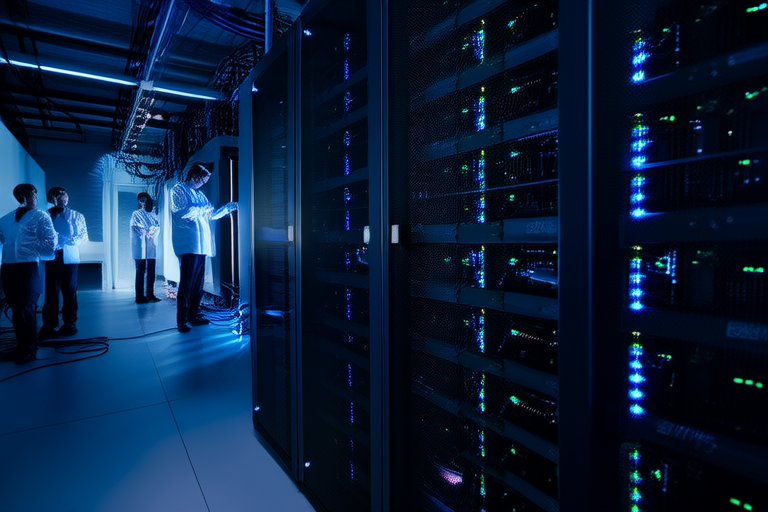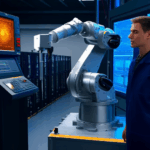“`html
Unlocking the Future: How Machine Learning is Reshaping Technology
Machine learning (ML) is rapidly evolving into one of the most influential technologies of our time. By enabling systems to learn from data and make predictions or decisions without explicit programming, ML is transforming industries and driving innovation across the globe. From healthcare to finance, automotive to retail, the applications of machine learning are vast and varied. This article explores how machine learning is reshaping technology, addressing both its current applications and future prospects.
Applications of Machine Learning
Machine learning is revolutionizing industries by providing solutions to complex problems and enhancing operational efficiency. In healthcare, ML algorithms analyze medical imaging to detect diseases at early stages, improving patient outcomes. For instance, Google’s DeepMind has developed an AI system capable of diagnosing eye diseases with an accuracy rate comparable to human experts. Similarly, in finance, machine learning models are employed to predict market trends, manage risk, and automate fraud detection. Companies like JPMorgan Chase have implemented machine learning algorithms to analyze large datasets and identify potential fraudulent transactions.
The automotive sector is leveraging machine learning for autonomous driving, where vehicles use sensors and cameras to navigate roads safely. Tesla’s Autopilot system is a prime example of this application. Retailers also benefit from machine learning through personalized recommendations and inventory management. Amazon uses recommendation engines based on customer browsing history and purchase behavior to suggest products, thereby increasing sales and customer satisfaction.
Impact on Technological Innovation
Machine learning is a cornerstone of technological innovation, propelling advancements in artificial intelligence (AI), robotics, and data analytics. Natural language processing (NLP) enables machines to understand, interpret, and generate human language, facilitating applications like voice assistants and chatbots. Google’s BERT model, for example, significantly improved search engine results by understanding context in queries. Computer vision, another area driven by machine learning, allows computers to interpret visual information from images and videos, powering applications such as facial recognition and autonomous drones.
Predictive analytics, which uses historical data to forecast future events, is increasingly being applied in various industries. In manufacturing, predictive maintenance uses machine learning algorithms to anticipate equipment failures before they occur, reducing downtime and maintenance costs. These innovations underscore the transformative power of machine learning in driving technological progress.
Challenges and Ethical Considerations
Despite its potential, the implementation of machine learning comes with significant challenges. Data privacy is a major concern, particularly given the vast amounts of personal data required for training ML models. Ensuring that this data is collected, stored, and used responsibly is crucial. Additionally, algorithmic bias can lead to unfair treatment of certain groups, exacerbating existing social inequalities. For instance, facial recognition systems have been shown to perform poorly on individuals with darker skin tones, raising questions about fairness and equity.
The demand for skilled professionals proficient in machine learning further complicates the adoption of these technologies. Organizations must invest in training programs and partnerships to build a competent workforce capable of developing and deploying effective ML solutions. Ethical considerations, such as transparency and accountability, are essential to ensure that machine learning is used responsibly and for the greater good.
Future Prospects
The future of machine learning holds immense promise, with numerous emerging trends and technologies poised to shape its evolution. Quantum computing, for instance, promises to accelerate the training of complex machine learning models by solving optimization problems more efficiently than classical computers. Edge computing, which processes data closer to the source, could enhance real-time decision-making in applications like autonomous vehicles and smart cities. Federated learning, a technique that allows multiple devices to collaboratively train a model while keeping data local, offers a promising solution to data privacy concerns.
As machine learning continues to advance, its impact on society and industry will grow exponentially. From personalized medicine to smarter cities, the possibilities are endless. The integration of machine learning with other emerging technologies, such as the Internet of Things (IoT) and blockchain, will further expand its capabilities and applications. The future of machine learning is not just about automating tasks but about creating intelligent systems that can adapt, learn, and innovate in ways that were previously unimaginable.
Conclusion
In conclusion, machine learning is reshaping technology in profound ways, transforming industries and driving innovation. Its applications span healthcare, finance, automotive, and retail, offering solutions to complex problems and improving efficiency. Machine learning is also propelling advancements in artificial intelligence, robotics, and data analytics, leading to breakthroughs in natural language processing, computer vision, and predictive analytics. While challenges remain, including data privacy concerns, algorithmic bias, and the need for skilled professionals, the potential benefits of machine learning far outweigh these obstacles.
The future of machine learning is bright, with emerging trends and technologies set to unlock new possibilities. As we continue to explore and harness the power of machine learning, we stand on the brink of a new era of technological advancement. The exciting possibilities that lie ahead in the field of machine learning offer a glimpse into a future where intelligent systems will play a central role in shaping our world.
“`


